This is not to diminish the importance of other long-lived radionuclides released by catastrophic nuclear accidents, such as strontium-90 and plutonium, which can affect living things in equally bad or even worse ways. But there appears to be proportionally much less of these radionuclides released than cesium-137 in reactor accidents, so the emphasis in this chapter is on radioactive cesium.
Cesium becomes a gas at 1,240 degrees Fahrenheit (at one atmosphere of pressure), whereas fuel rods heat to the point of rupture at about 1,500 degrees Fahrenheit and ignite at 3,300 degrees Fahrenheit. The buildup of gas pressure inside the rod causes it to rupture (the zirconium cladding bursts). The zirconium cladding on spent fuel rods will react exothermically when exposed to air and heated to around 1,800 degrees Fahrenheit, creating a catastrophic fire with consequences potentially worse than a reactor meltdown. (B. Alvarez, “What About the Spent Fuel?,” Bulletin of the Atomic Scientists , January–February 2002, 45–47.)
This fallout is most concentrated by rainfall that washes it from the sky, which tends to concentrate it in an irregular fashion, accounting for its patchy deposition.
The distribution of cesium-137 tends to be uneven, of course, but it is found in everything from the trees, which produce radioactive smoke when their firewood is used for cooking and heating, to all varieties of plant and animal tissues. Daily exposure to small amounts of radionuclides in such environments (mostly cesium-137) is virtually unavoidable because they enter the body via up to 94 percent of foodstuffs (V. Nesterenko and A. Nesterenko, “Decorporation of Chernobyl Radionuclides,” in Chernobyl: Consequences of the Catastrophe for People and the Environment , in Annals of the New York Academy of Sciences , vol. 1181 (Boston: Blackwell Publishing on behalf of the New York Academy of Sciences, 2009), viii, 304.
Plants and animals in both aquatic and terrestrial ecosystems tend to accumulate cesium as they would potassium. This is especially true for terrestrial organisms rich in potassium, such as fungi and berries. Cesium uptake in plants can be somewhat limited by the addition of potassium fertilizers; it is also taken up less in aquatic systems where waters are murkier.
A. Madrigal, “Chernobyl Exclusion Zone Radioactive Longer Than Expected,” Wired.com, December 15, 2009.
I realize that these are considered “old” terms to describe radioactivity, but they are the most straightforward and easiest to understand for most people. I think that the numerous changes in terminology in radiological science have in part been done to obscure such meanings from nontechnical audiences.
There are highly radioactive naturally occurring radionuclides, such as radon and its daughter product, polonium, which have very short half-lives. These are not commonly found in foodstuffs because they self-destruct long before they can make it into the food chains.
The 88 curies per gram includes the decay process of cesium-137 to barium-137m, in which the barium-137m emits high-powered gamma radiation. Barium-137m has a half-life of not quite three minutes.
The models use weighting factors to multiply the estimated biological effects of various atomic particles (twenty times for alpha particles) and the given tissue where it resides. But the multiplication is quickly negated by many orders of magnitude when the dose given to a tiny cluster of cells is averaged over the organ system or body area in which the tiny cluster of cells resides.
R. Alvarez, J. Beyea, K. Janberg, J. Kang, E. Lyman, A. Macfarlane, G. Thompson, and F. von Hippel, “Reducing the Hazards from Stored Spent Power-Reactor Fuel in the United States,” Science and Global Security 11 (2003): 7.
“The Big Picture,” RT.com, May 17, 2011, retrieved from http://www.youtube.com/watch?v=xEFtfkJc4kM.
These scientists declined my request to republish the image here, but it can be found online as slide number 25 in Gayle Sugiyama and John Nasstrom, “Overview of the NARAC Modeling During the Response to the Fukushima Dai-ichi Power Plant Emergency,” International Workshop on Source Term Estimation Methods for Estimating the Atmospheric Radiation Release from the Fukushima Daiichi Nuclear Power Plant, February 22–24, 2012, http://www.ral.ucar.edu/nsap/events/fukushima/documents/Session1_Briefing3-Sugiyama.pdf.
One millisievert per year is similar to current U.S. radiation safety exposure standards.
This figure was provided to me by the former Japanese ambassador to Switzerland Mitsuhei Murata, who obtained these figures from government officials in Fukushima Prefecture.
M. Fackler, “Japan’s Nuclear Refugees, Still Stuck in Limbo,” New York Times , October 1, 2013.
Comments by the Committee to Bridge the Gap, NIRS, PSR Los Angeles, and the Southern California Federation of Scientists on the National Council on Radiation Protection and Measurements’s draft report SC 5-1, “Approach to Optimizing Decision Making for Late-Phase Recovery from Nuclear or Radiological Terrorism Incidents,” April 2013.
A. Makhijani, “The Use of Reference Man in Radiation Protection Standards with Recommendations for Guidance and Change,” Institute for Energy and Environmental Research, December 2008.
Ibid.
These conversions are made through the multiplication of hypothesized “radiation weighting factors” times the absorbed dose in order to obtain the equivalent dose, and through the subsequent multiplication of hypothesized “tissue weighting factors” times the equivalent dose to obtain a total effective dose. “Effective dose coefficients” are also calculated and then used to calculate an internal dose that becomes a “committed” dose, averaged over time, after the radionuclide enters the body.
Committee Examining Radiation Risks of Internal Emitters, London, “Report of the Committee Examining Radiation Risks of Internal Emitters (CERRIE),” October 2004.
Significant quantities of cesium-137 may also be making their way into human bodies through the inhalation of radioactive smoke. This is because in most rural homes of Belarus and Ukraine, cooking and heating is done with wood, and the wood in contaminated areas has become radioactive. Burning the wood releases its radioactivity. Vassili Nesterenko, a prominent Soviet physicist who lived in Belarus (he died in 2008), stated that chimneys in these households became “miniature nuclear reactors” after constantly burning radioactive wood.
ICRP, “Application of the Commission’s Recommendations to the Protection of People Living in Long-Term Contaminated Areas After a Nuclear Accident or a Radiation Emergency,” Annals of the ICRP 39, no. 3 (2009).
Y. Bandazhevsky, “Chronic Cs-137 Incorporation in Children’s Organs,” Swiss Medical Weekly 133, no. 35–36 (2003): 488–90.
There is an excellent documentary, Nuclear Controversies by Wladimir Tchertkoff, that tells much of this story and includes an interview with Dr. Bandazhevsky while he was under house arrest.
Читать дальше
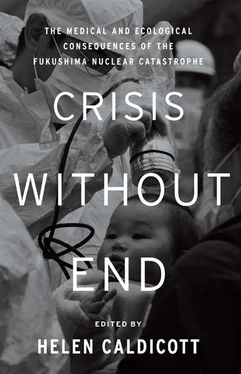

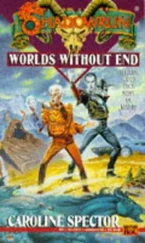

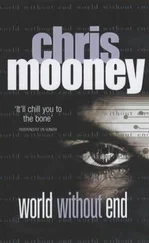

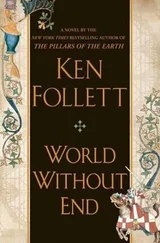
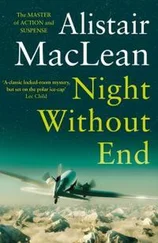




![Helen Rowland - The Widow [To Say Nothing of the Man]](/books/752764/helen-rowland-the-widow-to-say-nothing-of-the-man-thumb.webp)